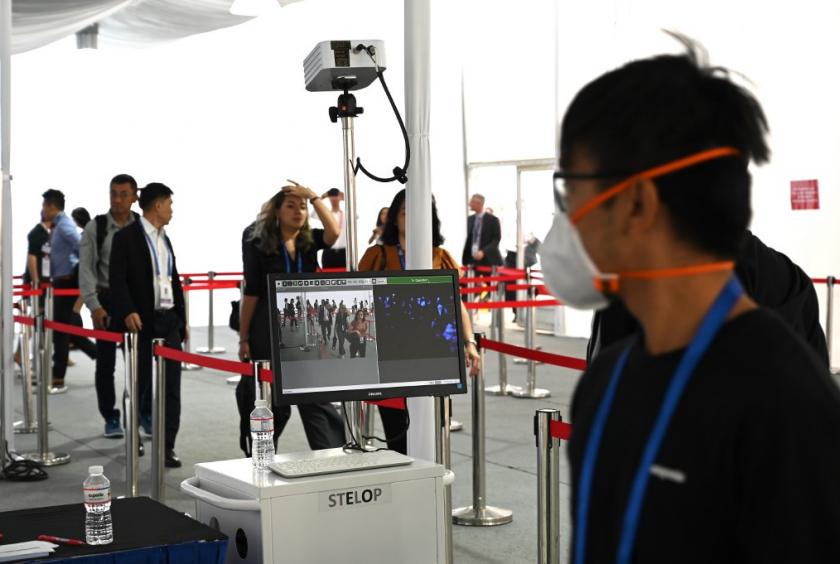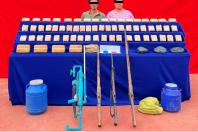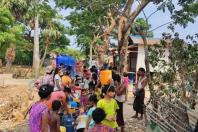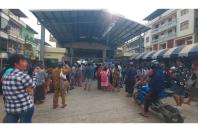
Jakarta Post /ANN - Over the past few weeks, countries outside China have not sent adequate case reports to the World Health Organization on time. The media, meanwhile, suffered an ‘infodemic.’ Instead of battling the coronavirus disease (COVID-19), the WHO and its chief were targeted.
The greatest virus outbreak concern now is to avoid the emergence of any secondary virus clusters, but this critical task has been complicated recently by misguided media coverage and attacks against the WHO, China and people of Chinese descent rather than the virus.
WHO director-general Tedros Adhanom Ghebreyesus has urged global leaders to stop any stigmatizing and hate amid the virus outbreak. His comments in Munich followed reports that people of Asian descent have faced discrimination amid virus fears. “We will all learn lessons from this outbreak,” he added, “but now is not the time for reclamations or politicization.”
At the end of January, the WHO declared the ongoing virus outbreak a “public health emergency of international concern” (PHEIC). As the WHO made clear, the PHEIC declaration was not motivated by the situation in China but by the possible effects of the virus if it spread to countries with weaker healthcare systems.
At the WHO, the concern was compounded when terms like “virus outbreak,” “epidemic” and “pandemic” got blurred even in reputable international media. Tabloid hysteria contributed to ugly instances of xenophobia, even racism, against people of Chinese and Asian descent, while leading to bullying in schools, colleges, even universities.
The misinformation on a global scale compelled the WHO to declare the COVID-19 an “infodemic” on Feb. 2. Since media seemed to be shunning their responsibility to correct myths and rumors, the WHO had to allocate some of its scarce resources to do the job.
Stunningly, it took until mid-February for some of the world’s largest technology companies – including Google, Amazon and YouTube – to get together when the WHO hosted a Silicon Valley meeting to discuss how to clamp down on misinformation about the virus.
The struggle against COVID-19 has gone hand in hand with a battle against the WHO and its executives.
Since late January, almost 380,000 people have signed an online petition to the UN for the WHO chief to resign because he allegedly “solely believes" Chinese outbreak data. In contrast to those allegations, WHO chief Tedros has initiated a review process to study the causes of the virus, while stressing adherence to WHO guidelines regarding pandemics.
The smear campaign is an ugly déjà vu. In 2017, Tedros, a high-level Ethiopian health executive, succeeded Margaret Chan as the chief WHO. While he was considered highly qualified for the job and an innovative reformer in Ethiopia, his candidacy was attacked at the last eve of the WHO election, when odd stories surfaced about an alleged cover-up of cholera epidemics in Ethiopia. Reportedly, the allegations came from Lawrence Gostin, a US law professor who advised the rival UK candidate (and has recently resurfaced as a critic of China’s virus struggle).
In the UN, the African Union dismissed the allegations as an “unfounded and unverified defamation campaign.” Yet, once again, the old smear campaign stories have been recycled in the media.
When attacks against Tedros went nowhere, the international spotlight focused on WHO infections hazards director Sylvia Briand when she stated in early February that “we are not in a pandemic.” Then she became a target of criticism.
To avoid political intrigues, a pandemic declaration by the WHO requires strong evidence and relies on a tested six-stage classification.
The last pandemic was the 2009 H1N1 flu outbreak (swine flu), which is estimated to have killed around 150,000 to 300,000 people around the world. In contrast, COVID019 has so far resulted in 4 deaths outside China, despite weeks of diffusion.
In the early 2000s, China’s efforts to control SARS were criticized as the disease spread internationally before the global outbreak was subdued. A decade later, the Chinese response to the Avian influenza (H7N9) was significantly faster, broadly praised and the disease did not spread widely. With COVID-19, as Tedros has stated, China should be credited with identifying the virus in “record time,” sharing its genetic sequence quickly and flagging potential international spread.
Yet, international coverage of the COVID-19 has systematically focused on China's alleged conduct, while ignoring the actual conduct of many other influential WHO member states.
This discrepancy prevails even today, despite the news bomb of Feb. 4, when WHO chief Tedros said it was not China but countries outside China that had proved slow in sharing complete information about cases.
The WHO was concerned that, even after almost a month of international crisis and global alert, it had received complete case reports for only 38 percent of the cases.
In other words, a whopping three of five member countries had failed to provide adequate information to the WHO in a timely manner. Those reports were vital to the global organization so that it could assess the true international scope of the outbreak, while broadening and deepening containment efforts.
“I don’t think it’s because they lack capacity,” Tedros stated. It would be ideal, he added, if the WHO received the most up-to-date information, not just from China but the rest of the world.
Even though these lost opportunities could result in potential secondary COVID-19 outbreaks outside China, international media have not yet asked the tough questions about the belated international cooperation outside China.
Instead, international coverage has produced a series of headlines against the WHO. On Feb. 5, a day after Tedros had urged countries to provide complete case reports, the Financial Times reported that the influential WHO emergency committee member and veteran professor John Mackenzie “hit out at Beijing’s ‘reprehensible’ response,” and “accused China of not reporting coronavirus cases fast enough.”
The charge was not publicly supported by other committee members, nor by WHO executives. Moreover, the FT neglected to mention that Mackenzie also serves in the Australian government’s Indo-Pacific Centre for Health Security, which plays a role in the US-led Indo-Pacific initiative aiming to contain China’s rise, and is the co-chair of a major NGO, whose key partners include the Pentagon’s Defense Threat Reduction Agency, which compete “against Chinese influence.”
On Feb. 13, the Wall Street Journal released a front-page story titled “WHO Criticized for Virus Response” that broadened the WHO criticism. It relied in part on critical quotes by both Mackenzie and Lawrence Gostin, the China critic who had tried to undermine Tedros’s WHO candidacy. Free media have a right to critical views, but not to the lack of relevant context. Like other interviewees, both were portrayed as independent, neutral observers. All interviewees represented experts from the US or its allies. Not a single major Chinese health expert was interviewed.
This pattern has been typical recently even for reputable international dailies. Such purposeful selectivity fosters an impression that legitimate expertise is limited mainly to critics of the WHO.
Throughout the outbreak, Tedros has admirably sought to foster an international battle against COVID-19, while garnering funds against future epidemics. “The virus is a common enemy,” he said. “Let’s not play politics here.”
As the number of COVID-19 cases could exceed 100,000 in a week or two and global resources should be focused on avoiding secondary outbreak clusters outside China, it is the virus that international cooperation and coverage should attack – not the WHO.










